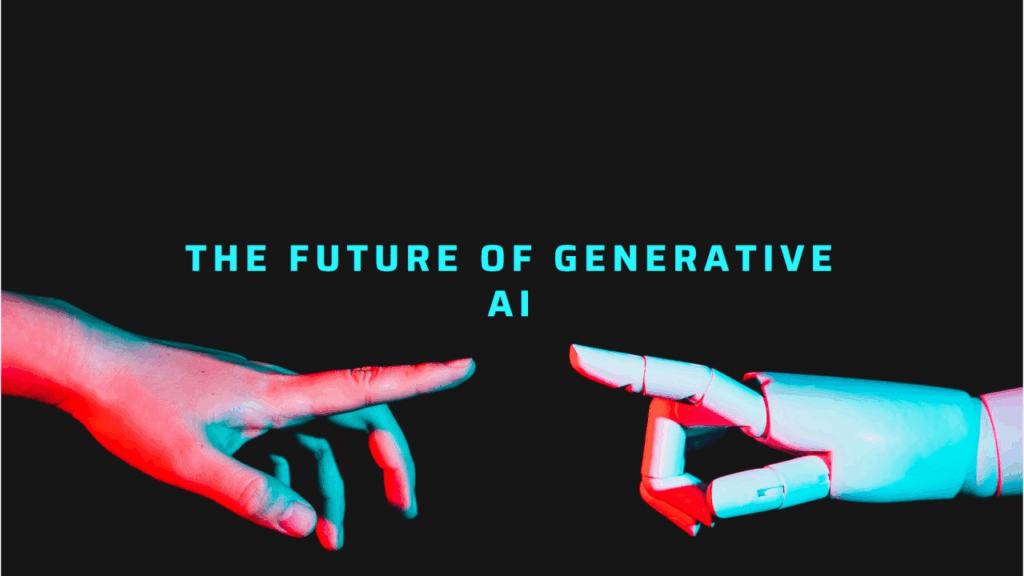
The Future of Generative AI Is Transforming Innovation Across Industries in 5 ways
The future of generative AI is rapidly unfolding, bringing a wave of innovation that’s redefining how we create, build, and interact with technology. From producing breathtaking digital art to accelerating drug discovery, generative AI is poised to become a cornerstone of modern advancement.
But what exactly is generative AI, and why is its future so impactful? In this blog, we’ll explore the core concept and five powerful ways this technology is already reshaping the world — along with the challenges we must address moving forward.
What is Generative AI?
Generative AI is a branch of artificial intelligence focused on creating new content rather than simply analyzing or organizing existing data. Unlike traditional AI systems that perform classification or prediction, generative models learn patterns and structures from data to generate entirely new outputs such as:
Text (like this blog post)
Images
Music
Video
Code
This is made possible through powerful neural networks like:
Transformers (e.g., GPT models)
Generative Adversarial Networks (GANs)
These models understand semantics, context, and patterns, enabling them to produce coherent and original content. This ability is at the heart of why the future of generative AI holds such promise.
1. Empowering Creativity in Art and Content
Generative AI is transforming the creative industry by offering tools that assist or automate content production. Applications include:
AI-generated images using tools like DALL·E 2, Midjourney, and Stable Diffusion
Generating design assets and branding materials
Writing blog posts, ad copy, and storytelling drafts
Assisting with language translation and localization
By reducing time and effort while expanding creative possibilities, generative AI enables creators to focus more on ideation and refinement.
2. Accelerating Drug Discovery and Medical Innovation
In healthcare, generative AI is speeding up the traditionally slow drug discovery process. AI models can:
Design novel molecular structures tailored to specific therapeutic goals
Predict molecular interactions and side effects
Reduce the need for extensive lab testing
This leads to faster, more cost-effective treatment development and opens new doors for tackling complex diseases.
3. Innovating Materials Science and Engineering
Generative AI is playing a vital role in the creation of next-generation materials by:
Designing substances with specific physical or chemical properties
Discovering lightweight, high-strength construction materials
Improving energy efficiency in batteries and solar panels
This innovation contributes to advancements in fields like construction, transportation, and renewable energy.
4. Enhancing Software Development and Automation
Developers are leveraging generative AI to improve productivity and software quality. Tools like GitHub Copilot and Tabnine help with:
Writing code from natural language prompts
Suggesting bug fixes and optimizations
Automating repetitive coding tasks
This transformation enables faster prototyping, fewer errors, and more efficient development workflows.
5. Addressing Ethical Challenges and Responsible Use
With great power comes responsibility. The future of generative AI must also address serious concerns such as:
Misinformation and Deepfakes: AI can generate realistic but misleading content, threatening trust in digital media.
Bias and Fairness: Biased training data can produce discriminatory or harmful outputs.
Intellectual Property: Who owns AI-generated content? Legal clarity is still evolving.
Transparency and Regulation: Ensuring ethical training practices and responsible deployment is critical.
Thoughtful governance, open discussions, and ethical frameworks will be vital in shaping a safe and beneficial AI future.
Conclusion: Shaping the Future of Generative AI
The future of generative AI represents one of the most exciting frontiers in technology. From revolutionizing creativity and healthcare to advancing science and software, its transformative potential is undeniable.
Yet, to fully harness these benefits, we must address its ethical implications and build transparent, inclusive, and responsible AI systems. As this technology continues to evolve, it’s not just changing industries—it’s changing how we innovate and imagine the future.
